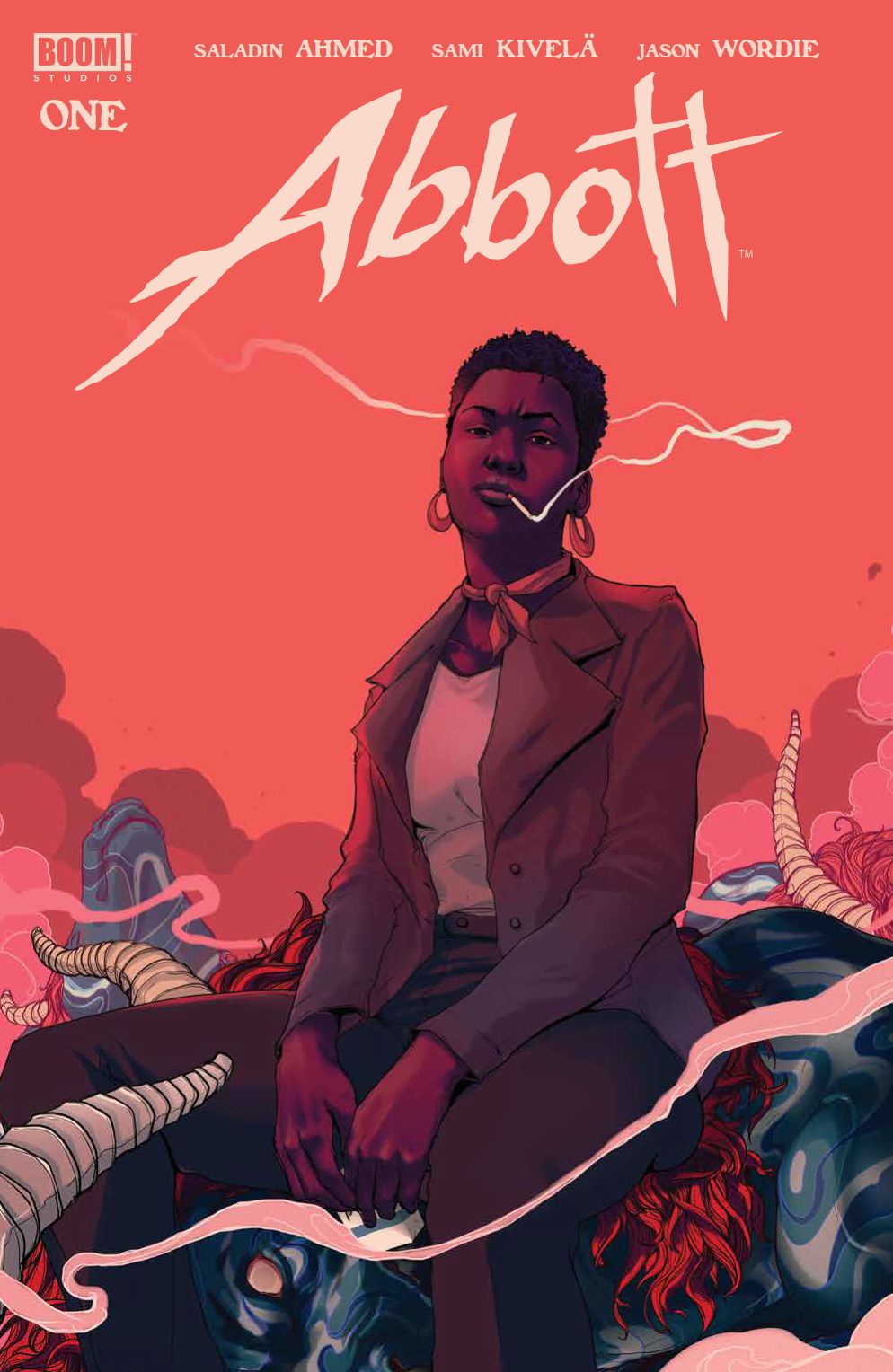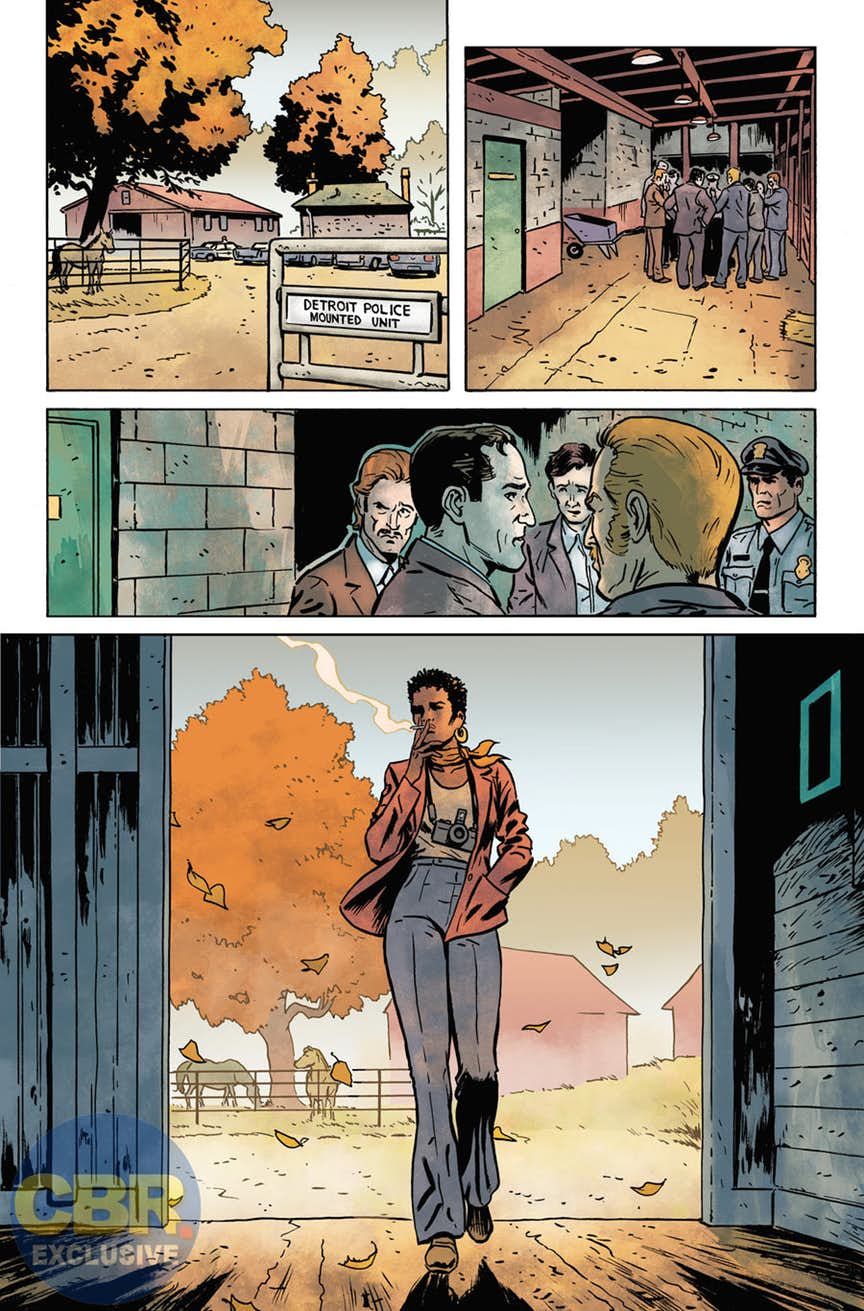REVIEW: Abbott #1
- WRITER
- Saladin Ahmed
- Artist
- Sami Kivelä
- Letterer
- Jim Campbell
- Cover Artist
- Taj Tenfold
- Publisher
- BOOM! Studios
- Price
- 3.99
- Release Date
- 2018-01-24
- Colorist
- Jason Wordie
Abbott #1 is as badass, smart and cool as its namesake, Elena Abbott. Called the Black Lois Lane by some and a menace by others, Abbott is a journalist for the Detroit Daily newspaper. In a city rife with racial tension, in 1972 when the Black Panther Party is still active and fighting for justice, she is a lone voice actually addressing these issues with a critical eye. She’s the one black reporter at the Detroit Daily and one of the few Black reporters in the city, it seems, but she’s got a good editor on her side and the Black community behind her. She’s got years of practice fighting institutionalized sexism and racism, and a duty to share the truth, as uncomfortable as it may be.
RELATED: Saladin Ahmed’s Abbott Combines ’70s Race Politics & Supernatural Noir
Elena’s a no-nonsense kind of woman, and we get some great character moments from writer Saladin Ahmed that quickly and clearly tell us who she is. At the diner she frequents, she gets asked why she always orders the same damn omelette. Her reply is “Habit, young man. Order. It’s what keeps chaos at bay.” Elena continues keeping chaos at bay with her two glasses of brandy before bed, her cigarettes, her records, her approach to news and journalism itself. Her facial expressions don’t deviate that much from panel to panel, but that’s not a fault of the artist, Sami Kivelä; it’s a deliberate choice to show the reader just how little this woman shares herself and her emotions with those around her. It’s a little bit of resting bitch face, one eyebrow raised in question, and every so often a “sure, buddy” kind of smirk. No wonder the 20-year-old waiter at the diner tried to ask her out.
Elena’s whole look is stunning, actually. She first appears backlit and beautiful in a half-page panel entering a barn where a police horse has been found mutilated. She’s smoking a cigarette with her camera around her neck, hair cropped short and big gold hoop earrings. She’s unapologetically female and unapologetically Black, and her blazer and pressed pants show that she knows how to do business in a field dominated by white men. She tops the look off with a yellow scarf tied around her neck, which Kivelä later uses as a panel border. It’s excellent.
While in this barn, investigating the case of mutilated police horse, Elena gets the feeling that something is wrong, something is really wrong, and not just in a “where is the rest of this horse’s body” way. She gets the same feeling later on when she’s called in to a crime scene at 3 a.m. to report on a murdered young Black man. He’s also missing half his body, and she gets the same feeling. The last time she felt this was years ago, when her husband died in a mysterious, supernatural fashion, but since the only deaths are a young Black man and a horse so far, nobody wants to actually investigate what’s going on. Nobody but Abbott, who now has to be Dana Scully and Lois Lane.
Taking place in 1970s America, there’s a lot of casual racism and sexism in Abbott, but it’s delicately used and then immediately shut down either through context or characters’ own words. In his writing Ahmed shows that yes, these attitudes did exist in 1972 and yes, it often was this explicit, but at the same time no, it’s not OK -- and it wasn’t at the time, either. There’s a difference between historical fiction that revels in racism and sexism and that which critiques it; this is the latter and shows us how it’s done.
PREVIEW: Abbott #1
The art also situates this comic in the '70s and in Detroit beautifully. The line art looks like it belongs in that period, but not in a way that feels old fashioned. The colors are muted browns, blues, reds and yellows, like the palette of a newspaper comic. It links the art to the setting and the story in a really beautiful way -- everything works in tandem, like it should in a good comic.
Abbott combines a badass main character of color, a supernatural mystery, racial politics, social conflict and some good old-fashioned investigative work. It’s good. It’s a smart, well-paced first issue with plenty of questions and fascinating characters to bring you back for issue #2. Don’t miss this.


